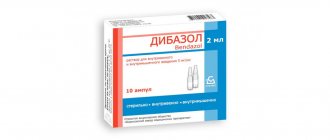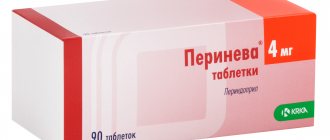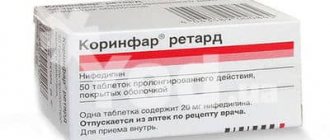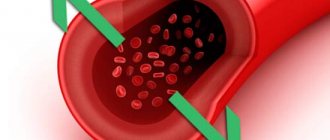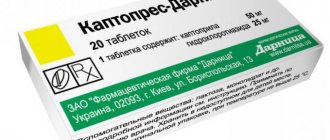Compound
Before using the drug, it is recommended to study in more detail the list of ingredients included in its composition.
"Enap" is made from the following substances:
- Enalapril maleate. This ingredient is added to many medications to help treat high blood pressure. Enalapril is also added to medications used to treat heart failure and left ventricular dysfunction.
- Corn starch. Quite often this substance is used for medicinal purposes in the treatment of skin diseases. However, when combined with other ingredients in Enapa, cornstarch helps normalize blood circulation and relieve symptoms of hypertension.
- Lactose. Milk sugar has many beneficial properties, due to which it is often added to medicines. It helps restore the body's defenses, improves metabolism, dilates blood vessels and copes with many heart diseases.
- Carbonic acid. This ingredient is used not only in medicine, but also in other industries. Carbonic acid salts help improve blood circulation and lower blood pressure.
Release form
In pharmacies you can find Enap in the form of tablets or injections for intramuscular administration. At the same time, the drug in tablet form is popular among patients.
Before purchasing Enap, it is recommended that you familiarize yourself with the main dosages of the drug:
- 2 mg - the most common type of tablet, which is characterized by a white color and a round shape;
- 5 mg - they are also white, but have a more elongated shape;
- 10 mg - tablets differ from others not only in volume, but also in orange color.
The drug, which is available in capsules, has only one dose, which is 1.25 ml.
Mechanism of action
One of the main advantages of Enap is the speed of its effect on the patient’s body. Almost immediately after administration, the drug begins to have a positive effect on the body.
Firstly, the drug activates the angiotensin system, thereby increasing the production of renin. It also helps lower aldosterone levels, which can cause symptoms of high blood pressure.
In addition, as a result of regular use of Enap, the production of an ingredient such as bradykinin is activated. This ingredient normalizes heart rate and helps lower blood pressure by dilating the walls of blood vessels.
Many doctors recommend Enap to patients suffering from primary hypertension. In this case, taking the pills will increase the flexibility of the blood vessels and speed up the pumping of blood through the heart.
Enap begins to act within an hour after taking the medicine in most patients. However, the maximum positive effect will be noticeable only after 5-6 hours.
Main properties of the drug
Enap blood pressure tablets are aimed at inhibiting the activity of the angiotensin-converting enzyme, thereby reducing the production of angiotensin 2, a substance that tends to increase blood pressure levels. The active substance is hydrolyzed to enalaprilat, thereby reducing the secretion of angiotensin 1 and angiotensin 2, which leads to a decrease in the level of aldosterone production.
Enap is an antihypertensive drug, the action of which is associated with an increase in the activity of the renin-angiotensin-aldosterone system, which plays an important role in the process of maintaining a stable level of blood pressure.
A decrease in blood pressure after taking the drug occurs regardless of the position of the person’s body in space, while the heart rate does not increase.
Orthostatic hypotension after initiation of drug treatment is observed in extremely rare cases
To achieve the necessary therapeutic effect from the medicine, it should be taken for several weeks. If the medication is abruptly discontinued, there is no increase in blood pressure. The therapeutic effect after taking the tablet is observed after 60 minutes; the maximum concentration of the active substance in the body is achieved after 4–6 hours. After consuming the tablet, up to 60% of the active components of the drug are absorbed in the intestines.
The duration of the therapeutic effect depends on the dosage of the drug taken. With the correct selection of the therapeutic dose, blood pressure readings will be stable throughout the day.
Characteristics of the properties of the drug for various diseases:
- Essential hypertension. A decrease in blood pressure provokes a decrease in peripheral vascular resistance, but this does not bring significant changes in heart rate.
- Diabetic nephropathy. After taking the drug, a decrease in protein concentration in the urine is observed.
- Chronic heart failure. Parallel use of diuretics and cardiac glycosides provokes a sharp decrease in blood pressure.
Enap reduces the risk of myocardial infarction and reduces the number of hospitalizations after angina pectoris
Regular use of tablets increases the body's sensitivity to physical activity and reduces the symptoms of heart failure. By taking pills for high blood pressure, the progression of pathological processes in the left ventricle slows down.
Indications for use
Before you start treating hypertension with these tablets, you should carefully read the indications for their use. Information about when it is best to take Enap can be found in the instructions for the drug.
Doctors recommend using the drug in the following cases:
- in the treatment of arterial hypertension;
- In the formation and development of complications of heart failure;
- in eliminating symptoms of left ventricular dysfunction;
- increasing the effectiveness of complex treatment of arterial hypertension using various drugs;
- to normalize the condition of patients suffering from angina.
Algorithm for choosing antihypertensive therapy for metabolic syndrome and arterial hypertension
S.V.
Nedogoda, T.A. Chalyabi, A.S. Salasyuk, I.N. Barykina. D.A. Pocheptsov, A.A. Ledyaeva, V.V. Tsoma, E.V. Chumachek, Volgograd State Medical University ACE inhibitors and angiotensin II receptor blockers belong to the main classes of antihypertensive drugs used in the treatment of arterial hypertension in patients with metabolic syndrome.
Each of the representatives of this group has clinical-pharmacological characteristics and nuances of clinical use. Based on their analysis, an algorithm for differentiated selection of a specific drug is proposed. It is known that in arterial hypertension against the background of metabolic syndrome, pronounced dysfunction of the vascular endothelium (excess of vasoconstrictors and deficiency of vasodilators, primarily nitric oxide), increased activity of the renin-angiotensin-aldosterone and sympatho-adrenal systems (high levels of leptin), vasospasm against the background of increased cardiac output, increased sodium reabsorption in the nephron tubules (due to hyperinsulinemia and compression of the kidneys by adipose tissue), fluid retention and hypervolemia, increased sodium and calcium content in the vascular wall, obstructive sleep apnea. The vast majority of patients have insulin resistance. They experience early target organ damage (left ventricular hypertrophy, quickly leading to diastolic myocardial dysfunction, increased stiffness of large arteries, hypofiltration in the kidneys and microalbuminuria). Typical metabolic disorders in arterial hypertension are impaired glucose tolerance, increased levels of triglycerides, cholesterol and uric acid. All these features significantly influence the choice of antihypertensive drug for the correction of blood pressure (BP) in patients with metabolic syndrome.
For patients with arterial hypertension and metabolic syndrome, it seems fundamentally important to ensure the positive effect of antihypertensive drugs on adipokines produced by adipose tissue, which today is no longer considered as an energy depot, but as an endocrine and paracrine organ that has a humoral, prothrombogenic and pro-inflammatory effect on other organs and body systems. Among more than 50 adipokines in obesity, the greatest role in the pathogenesis of both obesity itself and associated diseases and conditions is played by resistin, ghrelin, visfatin, apelin, adiponectin, TNF-alpha and interleukin 6. However, by far the most studied and important adipokine in obesity leptin is a hormone produced by fat cells and circulating in the blood in free and bound forms. Through its influence on specific receptors of the hypothalamus, leptin changes the expression of neuropeptides that regulate energy intake and expenditure in the body. In obesity, compensatory resistance of the hypothalamus to the central action of leptin develops with the development of leptin resistance (hyperleptinemia) through a feedback mechanism. Leptin has a number of effects that can aggravate existing disorders in arterial hypertension and obesity (stimulation of the sympatho-adrenal system, increased rate of fibrosis of the heart muscle, increased platelet aggregation, sodium retention, increased insulin resistance).
It seems clinically important to find a “leader” drug, since a patient with a combination of arterial hypertension and metabolic syndrome requires not only normalization of blood pressure, but also the maximum possible correction of all other modifiable risk factors (Fig. 1 and 2). The latest 2013 European recommendations for the treatment of arterial hypertension (ESH/ESC Guidelines for the management of arterial hypertension) declare that since metabolic syndrome is often regarded as a “prediabetic” condition, preference is given to blockers of the renin-angiotensin system and calcium antagonists, so as they have the potential to improve, or at least not worsen, insulin sensitivity, whereas beta blockers (except beta blockers with vasodilating properties) and diuretics should be considered as adjunctive agents, preferably used in low doses. The recommendations in the section “Drugs of choice in certain situations” also indicate that ACE inhibitors, angiotensin II receptor blockers (ARBs) and calcium antagonists are the drugs of choice for metabolic syndrome [1].
Thus, while there is some certainty with the classes of antihypertensive drugs that have benefits in patients with arterial hypertension and metabolic syndrome, there is no certainty regarding their specific representatives. At the same time, it is quite clear that the so-called “class-specific effects” are increasingly being called into question. That is why it seems advisable to clarify the capabilities of specific drugs for this pathology and offer the doctor an algorithm for their differentiated use.
ACE inhibitors
It is no coincidence that ACE inhibitors play an important role in the treatment of arterial hypertension in patients with metabolic disorders. This is due to their positive influence on the key links in the pathogenesis of the disease. Representatives of this group of drugs reduce the activity of the RAAS both in plasma and in tissues, slow down the inactivation of bradykinin and reduce the activity of the sympathetic nervous system (primarily by reducing insulin resistance and the level of postprandial glycemia).
The undoubted advantage of drugs in this group is the absence of a negative effect on carbohydrate, lipid and purine metabolism. Large multicenter studies SOLVD, ASCOT, HOPE revealed a significant reduction in the number of new cases of diabetes among patients receiving long-term ACE inhibitors.
These drugs have an organoprotective effect: they reduce left ventricular myocardial hypertrophy, slow down myocardial remodeling and fibrosis, reduce MAU, proteinuria, and prevent nephroangiosclerosis and chronic renal failure. The high effectiveness of ACEIs in slowing the progression of kidney disease and reducing the risk of cardiovascular complications was shown in the AIRE, REIN, PROGRESS, ADVANCE studies. The vasoprotective effect of ACE inhibitors is to improve the function of the endothelium of the vascular wall, antiproliferative and antiatherogenic effects. Large clinical studies (PHYLLIS, SECURE) have found that ACE inhibitor therapy can reduce the thickness of the carotid artery intima-media complex in patients with asymptomatic or manifest atherosclerosis.
An important advantage of ACE inhibitors is the ability to prevent the development of cardiovascular complications in high- and very high-risk patients, including hypertensive patients with MS and diabetes. The studies SOLVD, EUROPA, PROGRESS, FACET, ADVANCE showed that treatment with ACE inhibitors reduces the risk of recurrent stroke, ischemic events, hospitalizations due to decompensation of CHF and other cardiovascular complications and death from them.
There are 3 groups of ACE inhibitors depending on the chemical structure: those containing an SH group (captopril, zofenopril), a carboxyl group (enalapril, quinapril, ramipril, perindopril (Prestarium A®), trandolapril, spirapril, cilazapril, lisinopril), a phosphinyl group (fosinopril) . Since in arterial hypertension with metabolic disorders there is often an increase in the volume of adipose tissue, the choice of a specific ACEI should take into account its lipophilicity, since a higher level of lipophilicity determines a greater tissue affinity of the drug (i.e., the ability to influence ACE activity not only in circulation , but also directly in tissues). Most ACEIs are eliminated by the kidneys; only 4 drugs (zofenopril, fosinopril, trandolapril, spirapril) have a dual elimination route - through the liver and kidneys.
The active metabolites of fosinopril, quinapril, trandolapril, ramipril and perindopril (Prestarium A®) are highly lipophilic; moderate - enalapril, moexipril and captopril; Lisinopril is a hydrophilic compound. It is the high lipophilicity that determines the preferred choice of drug when a patient has a combination of arterial hypertension and metabolic syndrome, since only in this case is it possible to block the release of vasoactive humoral substances (primarily angiotensin II and proinflammatory cytokines) from the adipocyte. Currently, in the absence of a large evidence base on the differentiated use of antihypertensive drugs, there are two polar points of view on the choice of the optimal drug depending on lipo- and hydrophilicity. Proponents of the predominant use of hydrophilic ACEIs in the treatment of patients with obesity and arterial hypertension believe that lipophilic ACEIs are distributed in adipose tissue, and therefore it is necessary to increase their dosage to achieve the desired therapeutic effect. They believe that lisinopril, which is the only hydrophilic ACEI and is not “absorbed” by adipose tissue, appears to be more effective in this clinical situation. In addition, the following argument is put forward in favor of lisinopril: obese patients often have concomitant liver diseases (steatosis and steatohepatitis), and therefore preference should be given to ACEIs that are not metabolized in the liver, namely lisinopril, which is the only ACEI with no hepatic metabolism. However, it should be noted that there is also a fairly strong argument in favor of the use of lipophilic ACE inhibitors. First, today adipose tissue is considered as an endocrine-active tissue, in which the secretion of adipokines is closely related to the activity of RASS (primarily angiotensin). Therefore, it is the action of ACEIs at the level of the adipocyte itself that can positively influence the production of adipokines, which hydrophilic ACEIs, by definition, cannot do.
Among ACE inhibitors with high lipophilicity, the most studied in the treatment of arterial hypertension and metabolic syndrome are perindopril (Prestarium A®) and ramipril.
Perindopril (Prestarium A®) has clearly demonstrated its advantages over enalapril and losartan in several studies [3, 4, 5]. It has been shown that therapy with perindopril (Prestarium A®) in patients with arterial hypertension and metabolic syndrome can achieve better blood pressure control than with enalapril and losartan, more pronounced cardio-, angio- and nephroprotection, improvement in lipid and carbohydrate metabolism, reduction insulin resistance and inflammation, as well as a positive effect on one of the key adipokines in obesity - leptin.
Ramipril demonstrated its benefits in patients with arterial hypertension and metabolic syndrome in the international MICRO-HOPE study and the Russian CHARISM study.
Angiotensin II receptor blockers
It is known that ARBs (sartans) suppress the activity of the renin-angiotensin-aldosterone system more completely than ACEIs and do not affect the bradykinin system. In terms of antihypertensive effectiveness, ACEIs and ARBs are equivalent, but the latter have a better tolerability profile, because do not cause cough, angioedema. ARBs provide higher adherence to therapy among patients with hypertension due to a better tolerability profile and the absence of “escape” of the hypotensive effect.
ARBs have a pronounced cardio- and nephroprotective effect: they prevent left ventricular hypertrophy, increase the duration of sinus rhythm retention in paroxysmal atrial fibrillation, reduce the degree of microalbuminuria and proteinuria, and slow the progression of heart and renal failure. With long-term use, ARBs reduce carotid intima-media thickness and the volume of large atherosclerotic plaques (MORE study with telmisartan).
A significant reduction in the risk of developing diabetes during ARB therapy was also found in the LIVE, VALUE, CHARM, and ALPIN studies. In the LIFE study, the reduction in the relative risk of developing new cases of diabetes while taking losartan was 25%, in SCOPE with eprosatartan therapy - 20%, and in CHARM with candesartan therapy - 22%. Meta-analysis data also showed that ARB therapy is associated with a reduction in the development of new cases of diabetes [2].
At the same time, a significant reduction in the incidence of cardiovascular complications was noted in the treatment of ARBs in hypertensive patients with diabetes (LIFE, IDNT, RENAAL).
An important advantage of ARB therapy in light of the metabolic syndrome epidemic is that the number of AT1 receptors and their sensitivity to angiotensin II increases sharply with obesity, hyperinsulinemia and dyslipidemia.
An important mechanism of action of ARBs is the modulation of the activity of PPARγ receptors responsible for glucose homeostasis, lipid metabolism and blood pressure regulation. This effect not only reduces blood pressure, but also normalizes levels of glucose, insulin and triglycerides. Moreover, the results of a number of studies indicate a decrease in tissue insulin resistance due to stimulation of nuclear PPARγ receptors in the cells of adipose, muscle tissue and hepatocytes, and this effect is comparable to the effect of oral hypoglycemic drugs.
Thus, there is a compelling case for widespread use of the ARB class in metabolic syndrome. At the same time, the practicing physician faces the problem of differentiated selection of a specific drug for a specific patient. In this regard, it is advisable to consider the clinical and pharmacological characteristics of ARB representatives. Moreover, significant intraclass differences between them find new confirmation [5]. Thus, in a clinical study, two drugs from the ARB group (telmisartan and losartan) were compared. The study found that telmisartan, unlike losartan, reduces the concentration of free blood glucose, unbound insulin and HbA1c, thereby identifying the main intraclass differences between drugs in the potential improvement of metabolic disorders in patients with MS [6]. Losartan
Over the past decade, numerous and convincing data have emerged on the close relationship between increased uric acid levels and an increased risk of cardiovascular complications in hypertension, metabolic syndrome, and type 2 diabetes. At the same time, a connection has been proven between impaired uric acid metabolism and endothelial dysfunction [7]. According to the PIUMA Study, the presence of hyperurecemia increases the risk of cardiovascular complications by 1.73 times, and the risk of mortality by 1.96 times. The prevalence of HU with a combination of arterial hypertension and metabolic syndrome is 37.8%, and in its absence - 22% [8]. At the same time, the duration of the disease does not affect the frequency of GU. Patients with uric acid levels above 300 µmol/l have more pronounced metabolic risk factors, which are directly dependent on the degree of increase in uric acid. Losartan blocks the two main transport systems of distal tubular epithelial cells involved in the reabsorption of urates (urate/lactate and urate/chloride) and protects the structures of the renal tubulointerstitium from the damaging effects of urates. When using losartan, the excretory pool of uric acid increases only due to inhibition of urate reabsorption without increasing filtration, which fundamentally distinguishes it from classical uricosuric drugs, the use of which increases urate filtration and increases the risk of developing nephrolithiasis. It has been shown that losartan itself, and not its active metabolite E-3174, has uricosuric activity [9]. Consequently, it is due to the characteristics of the molecule, and not to blockade of the AT1 receptor, which is fundamentally important when analyzing the class-specific effects of this group of antihypertensive drugs. The LIFE trial, which assessed the effects of losartan and atenolol on cardiovascular events and mortality in high-risk hypertensive patients with left ventricular hypertrophy, also examined the association of baseline uric acid levels with other risk factors and disease prognosis and was the first large-scale study to do so. demonstrated that a decrease in uric acid levels during losartan therapy is associated with a positive effect on the incidence of complications in the treatment of arterial hypertension.
Valsartan
The NAVIGATOR study showed that in patients with impaired glucose tolerance and risk factors, treatment with valsartan leads to a relative reduction of 14% and an absolute reduction of 3.8% in the incidence of new cases of diabetes [10].
A distinctive feature of valsartan is its positive effect on sexual function in men and women [11,12]. This is due to its ability to exhibit a direct vasodilating effect, improve endothelial function and microcirculation, reduce the volume of connective tissue in the corpora cavernosa, increase testosterone levels in men and indirectly, through metabolites of angiotensin II (angiotensin IV), influence the dopaminergic system involved in the regulation of sexual behavior.
Candesartan
The metabolic effects of long-term antihypertensive therapy with candesartan were studied in the ALPINE study [13]. When compared with hydrochlorothiazide, the candesartan group showed a decrease in insulin levels, blood glucose, triglycerides and an increase in HDL. In the hydrochlorothiazide group, compared with the candesartan group, there was also an increase in the ratios of LDL cholesterol/HDL cholesterol and apolipoprotein B/apolipoprotein A-I, indicating a deterioration in the lipid profile. Against the background of these changes, diabetes mellitus was diagnosed in 4.1% of patients in the hydrochlorothiazide group and only 0.5% of patients in the candesartan group, and metabolic syndrome was diagnosed in 18 patients in the hydrochlorothiazide group and only 5 patients in the candesartan group. A distinctive feature of the drug is the presence of an evidence base for effective use in chronic heart failure, including in the subgroup of patients with impaired carbohydrate metabolism.
Irbesartan
The nephroprotective effect and ability of the drug to reduce albuminuria has been proven in large studies (IRMA, IDNT). But an important feature of irbesartan is its ability to achieve target blood pressure in metabolic syndrome in 70% of patients. At the same time, all of them showed a decrease in waist circumference and a decrease in the initially elevated levels of insulin, glucose and blood lipids. Moreover, it should be noted that these changes are most pronounced when the patient has a combination of arterial hypertension and metabolic syndrome [14]. Similar results were obtained in another study [15]. In addition, recent studies have shown that irbesartan and telmisartan act as partial agonists of peroxisome proliferator-activated receptor γ (PPARγ) at oral concentrations and doses recommended for the treatment of hypertension, making their use possible for improving insulin sensitivity [16]. Telmisartan
Telmisartan exhibits maximum activity against PPARs compared to other ARBs and has maximum lipophilicity. PPARγ play a key role in the metabolism and energy metabolism of adipose tissue - creating lipid reserves in white adipose tissue and increasing energy expenditure in brown fat. PPARγ is also involved in adipocyte differentiation and in the regulation of glucose metabolism by improving insulin sensitivity, being a link in the metabolism of lipids and carbohydrates. The use of telmisartan may prevent the development of atherosclerosis by reducing visceral fat, suppressing vascular inflammation and increasing adiponectin levels, especially in patients with metabolic syndrome.
A recently published meta-analysis of 10 randomized trials involving 546 patients with metabolic syndrome showed that telmisartan significantly reduced fasting glucose, hyperinsulinemia, glycated hemoglobin and increased insulin sensitivity and adiponectin levels [17].
It is important to note that telmisartan also has the same positive effect on all of these indicators, as well as on lipids and resistin, during therapy with rosiglitazone [18]. In addition, only telmisartan in combination with rosuvastatin reduces insulin resistance and C-reactive protein levels, in contrast to the combination of this statin with irbesartan and olmesartan [19].
Thus, analysis of the evidence base for the use of ARBs in metabolic syndrome, the features of their clinical pharmacology and experience in practical use allows us to offer the practitioner a simple algorithm for their differentiated use in this condition (Fig. 3). Calcium antagonists
As is known, this group includes dihydropyridine (nifedipidine, amlodipine, felodipine, lacidipine) and non-dihydropyridine (verapamil and diltiazem) calcium antagonists. Representatives of the first subgroup, against the background of a decrease in blood pressure, which develops due to peripheral vasodilation, can increase the heart rate (HR) and contribute to the activation of the SAS. Representatives of the second group, while maintaining pronounced antihypertensive activity, have a significantly less pronounced peripheral vasodilating effect than dihydropyridine calcium antagonists. Moreover, they are able to reduce heart rate (by suppressing the activity of sinus node automaticity) and reduce the activity of the SAS (data from the VAMPHYR study), which is important for obese patients. It should be noted that, according to many large studies, calcium antagonists significantly reduce the number of new cases of diabetes mellitus (INVEST, INSIGHT, ALLHAT), are able to reduce left ventricular hypertrophy and have an anti-sclerotic effect (VHAS).
Diuretics
One of the main mechanisms of increased blood pressure in arterial hypertension against the background of metabolic syndrome is hypervolemia, which occurs as a result of increased reabsorption of sodium and water in the proximal renal tubules against the background of hyperinsulinemia and increased vascular resistance. Therefore, diuretics could become one of the main classes of antihypertensive drugs used for this pathology. However, the undoubted advantages of classical thiazide diuretics are clearly insufficient to compensate for their negative effects (primarily metabolic effects - hypokalemia, deterioration of carbohydrate, lipid and purine metabolism).
According to the results of clinical observations, all thiazide diuretics worsen carbohydrate metabolism, even at a daily dose of 12.5 mg. Moreover, the higher the initial level of glycemia, the more it increases with their use. In young people, impaired glucose tolerance develops on average after 5 years of continuous use of thiazide diuretics, and in older people - 1 to 2 years after the start of their use. In the case of concomitant diabetes mellitus, glycemic control worsens within the first few days of starting thiazide diuretics. In addition to the adverse effect on carbohydrate metabolism, thiazide diuretics can have a negative effect on lipid and purine metabolism.
Indapamide retard (Arifon retard) stands apart among diuretics, which, unlike classical thiazide diuretics, does not have a negative effect on the metabolism of glucose, lipids and uric acid. Thus, according to the Russian multicenter study MINOTAVR (619 patients with metabolic syndrome and arterial hypertension), it proved to be a drug that can effectively reduce blood pressure and have a positive effect on carbohydrate, lipid and purine metabolism. It must be borne in mind that indapamide retard (Arifon retard) has a proven and pronounced cardio-, angio- and nephroprotective effect, which makes it in the group of diuretics the drug of choice for the treatment of patients with obesity and disorders of carbohydrate, lipid and purine metabolism, both mono- and combination therapy.
Beta blockers
Increased activity of the SAS in obese patients dictates the need for the use of β-blockers. However, non-selective β-blockers (atenolol, propranolol) negatively affect carbohydrate and lipid metabolism. In addition, β-blockers (including selective β1-blockers in high doses), by blocking β-adrenergic receptors of the pancreas, inhibit the release of insulin. Since β-blockers cause the development of IGT and weight gain, their use in uncomplicated hypertension and obesity is not recommended as first-line therapy. However, this group of drugs can be used for obesity and arterial hypertension in cases where it is not possible to achieve the target blood pressure level due to pronounced activation of the SAS and tachycardia.
“New” highly selective β1-blockers (bisoprolol, carvedilol, nebivolol) are practically free of those adverse side effects that limited their widespread use in patients with impaired carbohydrate and lipid metabolism. In addition, nebivolol has the unique property of increasing NO production and reducing the manifestations of endothelial dysfunction, which is typical for obese patients. In addition, the drug has a beneficial effect on carbohydrate metabolism (decrease in triglyceride levels) and cerebral hemodynamics, which can significantly expand the possibilities of its use in arterial hypertension against the background of metabolic syndrome. Nebivolol does not have an “antilipase” effect and it reduces total and peripheral vascular resistance, improves regional blood flow, renal perfusion, glomerular filtration rate, and increases the sensitivity of peripheral tissues to insulin. Therefore, among beta-blockers, the drug of choice for a combination of arterial hypertension and metabolic syndrome is nebivolol.
Imidazoline receptor agonists
A prerequisite for prescribing I2-imidazoline receptor agonists to patients with obesity and arterial hypertension is their ability to increase tissue sensitivity to insulin and improve carbohydrate metabolism. At the same time, according to the Russian multicenter study ALMAZ, in patients with metabolic syndrome, moxonidine therapy significantly improved lipid and carbohydrate metabolism, tissue sensitivity to insulin, contributed to a decrease in body weight and leptin levels in the blood and improved vascular endothelial function. Moreover, these positive changes were comparable in severity to metformin therapy.
Alpha - adrenergic blockers
Alpha-blockers (despite the results of the ALLHAT study) retain their therapeutic potential in the treatment of arterial hypertension in obese patients, due to their ability to reduce insulin resistance, improve carbohydrate and lipid metabolism and have a positive effect on renal hemodynamics. However, use should be limited to use only in combination with other antihypertensive agents.
As a result of the analysis of clinical trial data, the evidence base and the clinical pharmacology of antihypertensive drugs, it is possible to offer the practitioner an algorithm for their differentiated use in arterial hypertension and metabolic syndrome (Fig. 4).
Literature
1. ESH/ESC Guidelines for the management of arterial hypertension. Journal of Hypertension 2013; 31:1281–1357. 2. Elliott W., Meyer P. Incident diabetes in clinical trials of antihypertensive drugs: a network meta-analysis. Lancet 2010; 369: 201 – 207. 3. Krysiak1 R., Sierant1 M.., et al. The effect of angiotensin-converting enzyme inhibitors on plasma adipokine levels in normotensive patients with coronary artery disease. Pol J Endocrinol 2010; 61 (3): 280–286 4. Krysiak1 R., Sierant1 M.., et al. The effect of perindopril and enalapril on plasma resistin levels in normotensive patients with coronary heart disease. Pol J Endocrinol 2010; 61 (6): 683–690 5. Nedogoda S., Ledyaeva A., Chumachok E., Tsoma V., Mazina G., Salasyuk A., Barykina I. Randomized Trial of Perindopril, Enalapril, Losartan And Telmisartan in Overweight or Obese Patients With Hypertension // Clin Drug Investig 2013, 33:553–561 6. Vitale S, Mercuro G, et al. Metabolic effect of telmisartan and losartan in hypertensive patients with metabolic syndrome. Cardiovascular Diabetology 2005; 4:6-11. 7. Lebedeva M.V., Stakhova T.Yu., Minakova E.G., Zaitseva L.I., Severova M.M., Pulin A.A. Endothelial function in patients with arterial hypertension and uric acid metabolism disorders // Bulletin of the Russian Academy of Medical Sciences. 2010. No. 12. pp. 44-46. 8. Kobalava Zh.D., Kotovskaya Yu.V., Tolkacheva V.V., Malto A.S. Uric acid is a key component of the cardiorenometabolic continuum // Cardiovascular Therapy and Prevention 2008. No. 4.95-106. 9. Alderman M., Aiyer KJ Uric acid: role in cardiovascular disease and effects of losartan. Curr Med Res Opin 2004; 20 (3): 369–379. 10. NAVIGATOR Study Group. Effect of valsartan on the incidence of diabetes and cardiovascular events. N Engl J Med 2010; 366:1477-90. 11. Dusing R. Effect of the angiotensin II antagonist valsartan on sexual function in hypertensive men. Blood Press Suppl 2003;2:29-34. 12. Fogari R., Preti P., Derosa G. et al. Effect of antihypertensive treatment with valsartan or atenolol on sexual activity and plasma testosterone in hypertensive men. Eur J Clin Pharmacol 2002;58(3):177-80. 13. Lindholm LH, Persson M., Alaupovic P., Carlberg B. Metabolic outcome during 1 year in newly detected hypertensives: results of the Antihypertensive Treatment and Lipid Profile in a North of Sweden Efficacy Evaluation (ALPINE study). J Hypertension 2003;21(8):1563-1574. 14. Mamirbaeva K.M., Mychka V.B., Sergienko V.B., Chazova I.E. Metabolic syndrome and angiotensin II receptor antagonists. // Cardiovascular therapy and prevention 2007. No. 2. P.42-51. 15. Kintscher U., Bramlage P., et al. Irbesartan for the treatment of hypertension in patients with the metabolic syndrome: A sub analysis of the Treat to Target post authorization survey. Prospective observational, two armed study in 14,200 patients. Cardiovascular Diabetology 2007; 6: 12-16. 16. Benson SC, Pershadsingh HA, Ho CI, Chittiboyina A, Desai P, Pravenec M, Qi N, Wang J, Avery MA, Kurtz TW: Identification of telmisartan as a unique angiotensin II receptor antagonist with selective PPARgamma-modulating activity. Hypertension 2004, 43(5):993-1002 17. Takagi H, Niwa M, Mizuno Y, Goto SN, Umemoto T; ALICE (All-Literature Investigation of Cardiovascular Evidence) Group. Telmisartan as a metabolic sartan: the first meta-analysis of randomized controlled trials in metabolic syndrome. J Am Soc Hypertens. 2013,7(3):229-35 18. Derosa G, Fogari D, et al. Metabolic effects of telmisartan and irbesartan in type 2diabetic patients with metabolic syndrome treated with rosiglitazone. Journal of Clinical Pharmacy and Therapeutics 2007; 32: 261–268. 19. Rizos CV, Milionis HJ, Kostapanos MS, et al. Effects of rosuvastatin combi-ned with olmesartan, irbesartan, or telmisartan on indices of glucose metabolism in Greek adults with impaired fasting glucose, hypertension, and mixed hyperlipidemia: a 24-week, randomized, open-label, prospective study. Clin Ther 2010; 32:492-505.
Instructions for use
Every person planning treatment with Enap should know the specifics of using the drug. This will help you understand whether it lowers or raises your blood pressure and also determines the optimal dosage.
At what pressure should I take the medicine?
Initially, you need to decide at what blood pressure values it is better to use tablets. Experts recommend using the drug for older people who want to reduce high blood pressure. If you have low blood pressure, you should not drink Enap, it will only worsen your health.
To increase the effectiveness of the drug, you need to give up bad habits. Therefore, throughout the course of treatment you will need to stop smoking and drinking alcohol.
Dosage of the drug
To avoid overdose, it is necessary to determine the dose of the drug in advance. During the day, a person should drink no more than 25 grams of Enap.
Increasing this dose is possible only after consultation with your doctor.
Response time
The positive effect of taking Enap appears in each person at different times. However, in most cases, improvement in well-being is noticeable within 1-2 hours after taking the drug.
How long can I take it?
The duration of the treatment course is determined by the doctor who prescribed Enap for the treatment of hypertension. Most often, tablets are used for no more than a week to eliminate symptoms of high blood pressure. If the illness does not go away during this time, the course is extended for another five days.
Special instructions for the use of the drug Enap tablets
In patients with severe heart failure or severe renal impairment, as well as with water and electrolyte imbalance associated with treatment with diuretics, a salt-free diet, diarrhea, vomiting, hemodialysis, arterial hypotension may be observed, even several hours after taking the first dose. Hypotension is usually short-lived. Subsequently, the drug is usually well tolerated. Transient arterial hypotension is not a contraindication for taking the drug. In such cases, before starting enalapril, reduce the dose or, if possible, stop diuretics and a salt-free diet for several days. It is necessary to avoid prescribing the drug to patients with bilateral renal artery stenosis or stenosis of the artery of a single kidney. ACE inhibitors should be prescribed with caution to patients with coronary artery disease or cerebrovascular disease, severe aortic or mitral stenosis that affects hemodynamics, or with obstructed left ventricular outflow due to the risk of developing arterial hypotension and deterioration of blood supply to vital organs in such patients . Before starting and during treatment with the drug, it is necessary to monitor kidney function. During treatment, serum potassium levels may increase, especially in patients with chronic renal failure, patients with diabetes mellitus, and in patients taking potassium-sparing diuretics or potassium supplements. The simultaneous administration of Enap and these drugs is not recommended. Some types of membrane filters that are used in hemodialysis or other types of hemofiltration (apheresis) can cause hypersensitivity reactions. When carrying out desensitization to wasp and bee venom, hypersensitivity reactions may also occur. The effectiveness and safety of Enap in children have not been established. In some patients, at the beginning of treatment, taking Enap may cause arterial hypotension and dizziness, reducing the ability to drive vehicles or operate potentially dangerous mechanisms.
Overdose
It is undesirable to take Enap in large quantities, as this can lead to an overdose. Exceeding the permissible dose of the drug causes a sharp drop in blood pressure and deterioration in health. People who overdose experience breathing problems and a slow heartbeat. Kidney function is also impaired, leading to dehydration.
Many patients complain of increasing headaches, dizziness, nausea and a dry cough. If these symptoms appear, you must immediately lavage your stomach to clear the stomach of any remaining medication. Then the patient is advised to rest in bed and take activated charcoal to normalize the digestive system.
Side effects
Enap, like most other hypertension pills, has side effects that may bother patients after taking the drug.
Most often they occur in people who decide to ignore the rules for taking pills.
The most common complications after treatment with Enap include:
- skin redness;
- abdominal pain;
- heartbeat;
- dizziness;
- cough;
- general weakness and periodic loss of consciousness;
- digestive problems causing vomiting or diarrhea
- tingling in the right side of the chest;
- a sharp drop in blood pressure.
If side effects occur, stop taking Enap immediately and contact your doctor to prescribe another drug for high blood pressure.
“Indicators of normal pressure are different for everyone”
Doctors often hear this statement from patients themselves. Some say that they feel great with a pressure of 180 over 110, while others complain of weakness and poor health with readings of 120 over 80. In fact, the boundaries of the acceptable corridor are strictly limited: pressure that does not fall below 90/60 mm Hg is considered normal. Art. and not rising above 140/90 mmHg. Art. For some diseases, the values of the upper acceptable corridor may decrease.
The top reading is called systolic pressure. It corresponds to the moment of contraction of the heart muscle. The lower one, diastolic pressure, is measured between heartbeats as blood flows toward the heart. The systolic pressure indicator is more important, as it demonstrates the peak load on the vessels with each heartbeat.
The World Health Organization has adopted a more detailed classification. Normal pressure indicators are divided into three categories: optimal - up to 120/80, normal - up to 130/85, and high normal - no higher than 130-139 mm Hg. Art./85–89 mm Hg. Art.
Arterial hypertension is diagnosed with the following indicators:
- mild hypertension (stage I) - 140–159/90–99;
- moderate (stage II) - 160–179/100–109;
- severe (stage III) - over 180/110 mm Hg. Art.
A patient with persistently elevated blood pressure should make an appointment with a good therapist, as he needs mandatory treatment.
Contraindications
Before taking pills, each person should familiarize themselves with the contraindications to their use.
It is not recommended to engage in drug therapy with Enap for people who have the following health problems:
- internal bleeding;
- diabetes;
- narrowing of the renal artery;
- allergy to lactose and other ingredients included in the tablets;
- porphyria.
Analogues and substitutes
People who cannot use Enap to treat high blood pressure are advised to drink Enap substitutes.
Among the highest quality analogues are:
- "Berlipril." This remedy is considered a fairly effective drug that can get rid of the symptoms of hypertension. Berlipril contains enalaprilat, which accelerates the production of bradykinin and dilates the walls of blood vessels. In the first days you should not take more than 5 mg of the drug per day. The dose is gradually increased to 30 mg over 10 days.
- "Renitek". Made from enalapril maleate, which improves blood circulation and the functioning of the cardiovascular system. Using Renitek for a week will help reduce blood pressure to normal. To eliminate the symptoms of hypertension, you should drink at least 10 mg of the drug daily.
- "Renipril." The drug is prescribed to restore breathing, improve blood circulation, dilate blood vessels, and reduce the load on the heart. “Renipril is taken daily at a dose of 15 mg per day.
Use of the drug Enap tablets
Doses are prescribed by the doctor individually for each patient depending on his condition. The tablets are taken orally whole, with a small amount of water, regardless of meals. The drug must be taken at the same time every day. Do not take two doses at the same time. Dosing for adults. Treatment of arterial hypertension: the initial dose ranges from 5 mg to 20 mg, depending on the degree of hypertension (arterial hypertension) and the patient’s condition. The drug should be taken 1 time per day. Dose adjustment depends on the achieved reduction in blood pressure. For mild forms of hypertension (arterial hypertension), the recommended initial dose is 5–10 mg per day. Patients with renovascular hypertension, salt wasting, cardiac decompensation or severe hypertension (arterial hypertension) may experience an excessive decrease in blood pressure at the beginning of treatment. For such patients, an initial dose of 5 mg or less is recommended and initiation of treatment should be under medical supervision. Previous treatment with a high dose of a diuretic drug may lead to loss of circulating blood volume and the risk of arterial hypotension at the beginning of enalapril therapy. For such patients, it is recommended to start treatment with 5 mg or less. The usual maintenance dose is 20 mg once daily. The maximum maintenance dose is 40 mg each day, given as a single dose or divided into two doses. If possible, therapy with a diuretic drug should be stopped 2-3 days before starting therapy with enalapril. The starting dose for patients who cannot stop taking diuretics before starting treatment with Enap is 2.5 mg of the drug as a single dose. During treatment, it is necessary to monitor renal function and potassium levels in the blood plasma. Treatment of heart failure and asymptomatic left ventricular dysfunction. The initial dose is 2.5 mg 1 time per day (dose adjustment is determined by tolerability of the drug). In the absence or after effective treatment of symptomatic hypotension, the dose should be gradually increased to the usual maintenance dose of 20 mg, taken once or divided into 2 doses. It is recommended to titrate the dose over a 2- or 4-week period. The maximum dose is 40 mg every day, divided into several doses.
A week | Dose in mg/day |
| Week 1 | Days 1–3: 2.5 mg/day as a single dose Days 4–7: 5 mg/day as a dose divided into 2 doses |
| Week 2 | 10 mg as a single dose or divided into 2 doses |
| Week 3 and 4 | 20 mg as a single dose or divided into 2 doses |
During treatment with Enap it is recommended to monitor renal function and potassium concentration in the blood plasma. Dosing in Renal Failure: Enalapril dosages for patients with chronic renal failure are based on creatinine clearance; it is necessary to lengthen the intervals between doses and/or reduce doses.
Creatinine clearance | Initial dose in mg/day |
| Creatinine clearance is 30ml/min – 80ml/min | 5 mg – 10 mg |
| Creatinine clearance is 10ml/min – 30ml/min | 2.5 mg |
| Creatinine clearance is 10 ml/min or less | 2.5 mg per day of dialysis* |
*Dosage on days when dialysis is not performed is adjusted by the doctor depending on blood pressure readings.
The therapeutic dose for elderly patients should correspond to the functional state of the kidneys. Dosing for children: the dose should be selected individually according to the disease of the particular patient, the intended period of treatment, tolerability of enalapril, the body's reaction and according to blood pressure indicators. For patients weighing 20–50 kg, it is recommended to begin treatment with a dose of 2.5 mg; The recommended starting dose for patients weighing 50 kg or more is 5 mg once daily. The maximum recommended dose is 20 mg/day and 40 mg/day, respectively.
